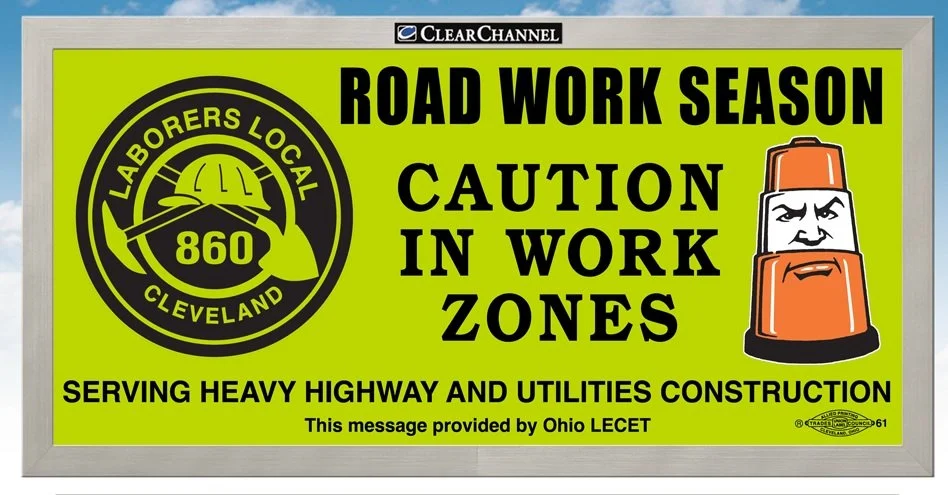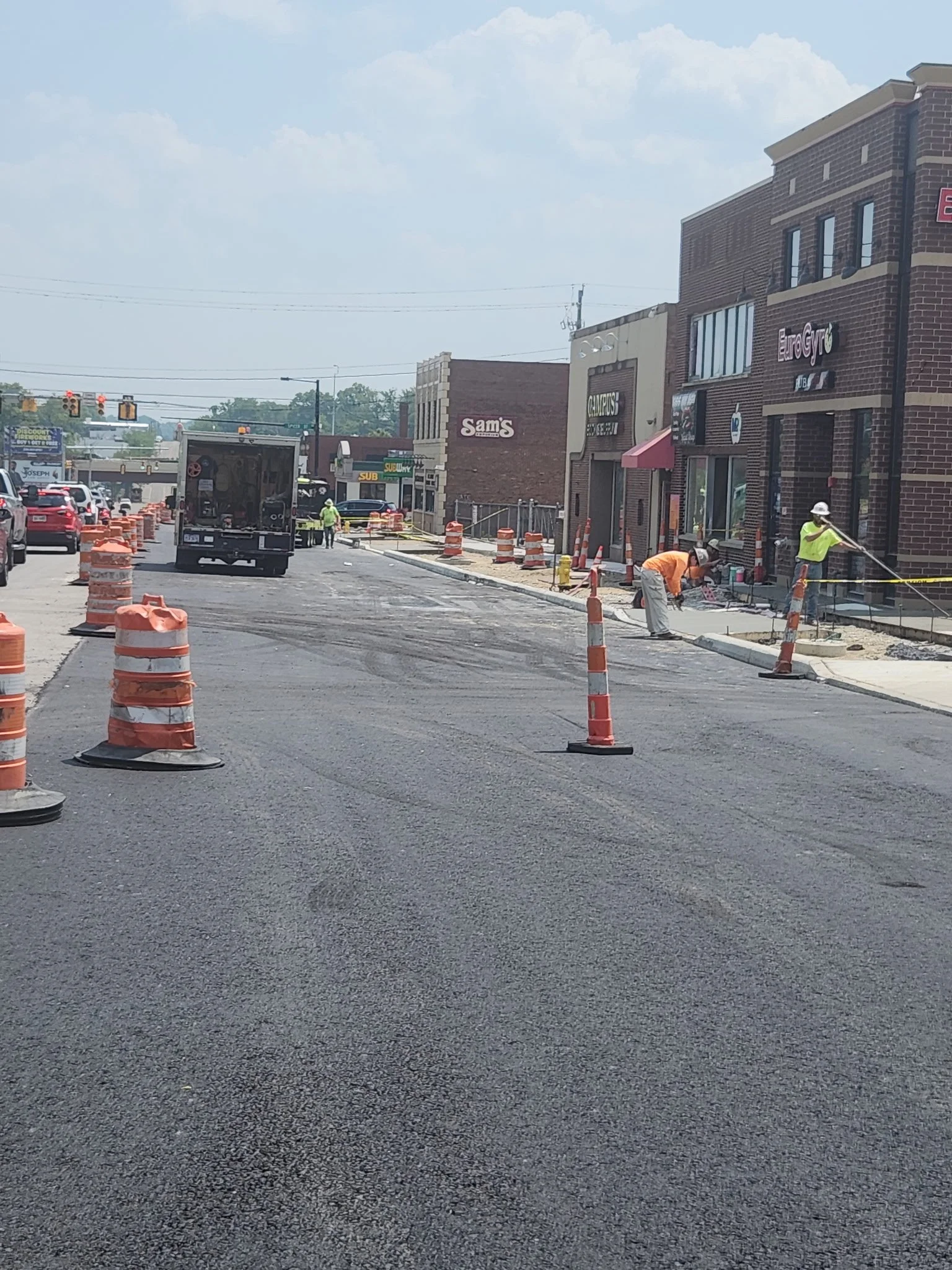Study: Contractors worried about road work safety; Union leaders urge caution, tougher penalties
To help promote safe, distraction-free driving in work zones, Laborers Local 860 purchases billboards throughout its jurisdiction that urge motorist to drive safely in their work zones.
Members of Laborers Local 894 perform road work in Akron. According to a recent AGC survey, most contractors are worried about the safety of their employees in work zones. Area business managers agreed, citing driver distraction as a major problem.
According to a report recently released by the Associated General Contractors of America, almost half of the contractors surveyed feel construction zones are more dangerous than ever.
The work zone safety study was based on a nationwide survey of highway construction firms conducted in April and May. Over 600 contractors completed the survey.
It found that 60 percent of highway construction firms reported at least one vehicular crash in their work zones last year, and nearly one-third of respondents reported five or more crashes in their work zones.
The report revealed that 47 percent of contractors feel highway work zones are more dangerous than they were a year ago, while 51 percent say the risks are the same.
Laborers Local 894 Business Manager Jason Legg also believes work zones are more dangerous now compared to last year. While side streets and main throughfares present different challenges than highway work, he called them all dangerous.
Legg also said night and day shifts pose equal danger. Crews working at night encounter less traffic, but drivers have limited visibility, while daylight workers are more visible, there is heaver traffic.
Laborers Local 860 Business Manager/Secretary-Treasurer Anthony D. Liberatore, Jr., believes the night shift is more dangerous. In the Local’s most recent Collective Bargaining Agreement, they negotiated a $2 per hour hazardous shift increase for those who work at night.
“Nighttime is more dangerous,” he said. “Roughly every eight out of 10 drivers on the road after midnight is impaired.”
No matter the time of day, the lives of those who make their living working on highways and road work depend on drivers paying attention in work zones.
“People don’t pay attention, they are in a rush, driving too fast or too slow or distracted by something in their vehicle,” said Liberatore.
Legg believes cell phones are the biggest problem, followed by drivers in a hurry and not obeying the construction zone speed limits.
“We need more cameras in the work zones, more police and flashing lights,” he said. “That’s what slows motorists down.”
Every chance he gets, including training classes, Legg reminds his members to keep their heads on a swivel and try to pay attention to traffic. He realizes it can be difficult.
“It’s very easy to get out of a safety mindset because they are focusing on their work,” Legg said. “It can be very easy to become complacent.”
Every year, Laborers 860 purchases billboards throughout their jurisdiction in an attempt to change driver behavior. The Local has also tried other methods to get drivers to focus when driving through construction zones.
“We bought a Crown Victoria and deploy it at work zones,” said Liberatore. We won’t give up on work safety until there are zero accidents.”
Among the AGC survey respondents who reported experiencing a work zone crash, 30 percent resulted in injury to construction workers, while 71 percent reported a crash in which drivers or passengers were injured.
Based on the data, motorists are almost twice as likely to die in a work zone crash as construction workers, a fact Liberatore already knew.
“Motorists are killing themselves more than workers,” he said.
About 13 percent of contractors in the survey reported that construction workers were killed in work zone crashes. In comparison, 24 percent of survey respondents reported that drivers or passengers were killed in those crashes.
“Every day tens of thousands of Americans work alongside our highways, often with little more between them and rushing traffic than an orange barrel,” said Jeffrey D. Shoaf, AGC CEO, in a prepared statement. “These workers are counting on the traveling public to slow down and pay attention, but too often, the public is letting them down.”
About 36 percent of contractors said the current penalties for moving violations in highway work zones are not sufficient to deter unsafe driving behavior. Another 39 percent say that while the penalties might be sufficient, enforcement is not.
Two-thirds of survey respondents want states to pass stricter laws against cell phone usage and distracted driving in work zones.
While Ohio has passed a law prohibiting drivers to use cell phones, Legg still sees drivers holding their phones to the ears and talking or constantly looking, which means they are likely texting.
“If they are caught using a phone in a work zone, the fines should be hire,” he said.
Legg also supports higher fines for speeding in work zones to get the attention of drivers and hopefully slow them down.


